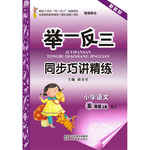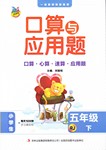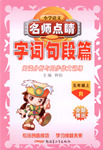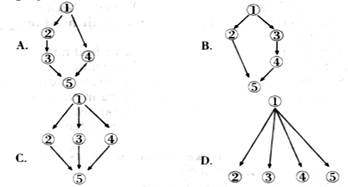
An inventor seeks to create a new product that serves a specific need and fulfills a role that other products do not. Sometimes an inventor comes up with a wholly new idea, but more often inventions are simply improvements on an older design. With a little imagination and creativity (创造力), an old idea can suddenly become something new.
However, creating a new invention means much more than having a brilliant idea. A good designer follows the design process: identifying the challenge, researching and brainstorming ideas(集思广益), designing a solution, testing and evaluating the ideas, and finally building the product. Designers also use science, math, technology, and engineering to design a tool that satisfies the need they identified.
Anyone can be an inventor —even kids! For example, Chester Greenwood was just fifteen years old when he invented a product that changed his life. In fact, his idea was so good that his invention supported him for the rest of his life. You may not know his name, but you probably know his invention —earmuffs (保暖耳罩)!
The inspiration for his earmuff design came to Chester when he was ice-skating. His ears were cold, and he decided to find a way to keep them warm. With the help of his grandmother, he made a new product to protect his ears and at the age of eighteen, Chester patented his earmuff design.
Many other famous inventors started young as well. Margaret Knight —the inventor of the flat-bottomed brown paper bag —is said to have created a safety device for textile looms(织布机) when she was just twelve years old. Another example is Thomas Edison, one of the greatest inventors in history, who applied for his first patent when he was just twenty-one years old. Over the course of his life, Thomas Edison patented a total of 1,093 inventions!
【小题1】 In most cases, an invention ________ according to the first paragraph.
| A.comes from a complete new idea |
| B.is usually based on an old product or idea |
| C.will change its creator’s life completely |
| D.is created by scientists in different fields |
| A.the difficulty in making a new invention |
| B.the common steps of creating new things |
| C.having a good idea is the key to creation |
| D.designing a tool is the first step in inventing |
| A.children can also invent something |
| B.it is easy even for children to make inventions |
| C.kids have more advantages in inventing things |
| D.to be an inventor is the best way to change one’s life |
| A.protect his ears while ice-skating |
| B.earn money to support his poor family |
| C.realize his dream of becoming an inventor |
| D.make himself look fashionable while ice-skating |
【小题1】B
【小题1】B
【小题1】A
【小题1】A
解析【小题1】根据but more often inventions are simply improvements on an older design.可知选B。
【小题1】根据A good designer follows the design process:及下文描述可知选B。
【小题1】根据Anyone can be an inventor —even kids! For example, Chester Greenwood was just fifteen years old when he invented a product that changed his life.可知选A。
【小题1】根据The inspiration for his earmuff design came to Chester when he was ice-skating. His ears were cold, and he decided to find a way to keep them warm.可知选A。


 举一反三同步巧讲精练系列答案
举一反三同步巧讲精练系列答案 口算与应用题卡系列答案
口算与应用题卡系列答案 名师点睛字词句段篇系列答案
名师点睛字词句段篇系列答案科目:高中英语 来源: 题型:阅读理解
阅读下面短文,掌握其大意.然后从1—15各题所给的A、B、C和D项中,选出最佳选项,并在答题卡上将该项涂黑。
A land free from destruction(毁灭,破坏), plus wealth, natural resources, and labor supply —— all these were important 1 in helping England to become the center for the Industrial Revolution. 2 they were not enough. Something else was needed to start the industrial process. That "something special" was men —— 3 individuals who could invent machines, find new 4 of power, and establish business organizations to reshape society. The men who created the machines of the Industrial Revolution 5 from many backgrounds and many occupations. Many of them were 6 inventors than scientists. A man who is a pure scientist is primarily interested in doing his research 7 .He is not necessarily working 8 that his findings can be used. An inventor or one interested in applied science is all trying to make something that has a concrete use. He may try to solve a problem by 9 the theories 10 science or by experimenting through trial and error. Regardless of his method, he is working to obtain a 11 result: the construction of a harvesting machine, the burning of a light bulb(灯泡), or one of 12 other objectives. Most of the people who 13 the machines of the Industrial Revolution were inventors, not trained scientists. A few were both scientists and inventors. Even those who had little or no training in science might not have made their inventions 14 a groundwork had not been laid by scientists years 15 .
A. cases B. reasons C. factors D. situations
A. But B. And C. Besides D. Even
A. generating B. effective C. motivating D. creative
A. origins B. sources C. bases D. discoveries
A. came B. arrived C. stemmed D. appeared
A. less B. better C. more D. worse
A. happily B. occasionally C. reluctantly D. accurately
A. now B. and C. all D. so
A. planning B. using C. idea D. means
A. of B. with C. to D. as
A. single B. sole C. specialized D. specific
A. few B. those C. many D. all
A. proposed B. developed C. supplied D. offered
A. as B. if C. because D. while
A. ago B. past C. ahead D. before
查看答案和解析>>
科目:高中英语 来源:2011年广东省高三第三次仿真模拟英语卷 题型:完型填空
阅读下面短文,掌握其大意.然后从1—15各题所给的A、B、C和D项中,选出最佳选项,并在答题卡上将该项涂黑。
A land free from destruction(毁灭,破坏), plus wealth, natural resources, and labor supply —— all these were important 1 in helping England to become the center for the Industrial Revolution. 2 they were not enough. Something else was needed to start the industrial process. That "something special" was men —— 3 individuals who could invent machines, find new 4 of power, and establish business organizations to reshape society. The men who created the machines of the Industrial Revolution 5 from many backgrounds and many occupations. Many of them were 6 inventors than scientists. A man who is a pure scientist is primarily interested in doing his research 7 .He is not necessarily working 8 that his findings can be used. An inventor or one interested in applied science is all trying to make something that has a concrete use. He may try to solve a problem by 9 the theories 10 science or by experimenting through trial and error. Regardless of his method, he is working to obtain a 11 result: the construction of a harvesting machine, the burning of a light bulb(灯泡), or one of 12 other objectives. Most of the people who 13 the machines of the Industrial Revolution were inventors, not trained scientists. A few were both scientists and inventors. Even those who had little or no training in science might not have made their inventions 14 a groundwork had not been laid by scientists years 15 .
| 【小题1】 |
|
| 【小题2】 |
|
| 【小题3】 |
|
| 【小题4】 |
|
| 【小题5】 |
|
| 【小题6】 |
|
| 【小题7】 |
|
| 【小题8】 |
|
| 【小题9】 |
|
| 【小题10】 |
|
| 【小题11】 |
|
| 【小题12】 |
|
| 【小题13】 |
|
| 【小题14】 |
|
| 【小题15】 |
|
查看答案和解析>>
科目:高中英语 来源:2011-2012学年福建省四地六校高一下学期第三次月考英语试卷(带解析) 题型:阅读理解
Did you ever wonder who invented products like Liquid Paper, Kevlar or paper bags? Most would think a man invented these items. Guess what? Women invented each of these. What? You don’t believe me? Well, read this:
Liquid Paper was invented by Bette Nesmith Graham in 1951 and originally called Mistake Out. Being a typist, Bette was increasingly irritated with being unable to erase her typing mistakes. The messy business left her hands black and the paper dirty. Bette was good at painting and remembered that an artist paints over mistakes. She applied that same principle to typing mistakes and Liquid Paper was born, making Bette into a self-made millionaire.
Kevlar, yes, the Kevlar of the bullet proof vest(防弹衣)—what police officers and soldiers wear, was invented by Stephanie Kwolek. Stephanie worked for the DuPont Company as a research chemist. She was asked to find a high-performance fiber. Originally, this fiber was intended to be used for car tires (轮胎). However, the fiber she developed in 1964 was amazing and is still used in products such as sailboats, skis, shoes, and yes, bullet proof vests. In 1995 Stephanie was named to the National Inventor’s Hall of Fame.
Margaret Knight invented a machine that revolutionized the making of paper bags. Paper bags had been made like envelopes but Margaret developed a machine that would fold and paste(粘)a flat-bottom paper bag, the very same type we still use today. Margaret’s family was poor and she started working at the age of nine. Her first invention at the age of twelve was a safety tool for a loom(织布机). Later she worked for the Columbia Paper Bag Company. It was there that she worked on improving the making of paper bags. She was issued her patent(专利)in 1870.
So next time you use a new product or an old one, will you wonder who made it? Do some research on the web and answer a few questions like: Who invented it? How was it invented? You may be surprised at some of the stories you uncover.
【小题1】The underlined word “irritated” in Paragraph 2 is the closest in meaning to_________.
| A.annoyed | B.excited | C.delighted | D.nervous |
| A.She was a member of the National Inventor’s Hall of Fame. |
| B.Her first invention was made when she was twenty. |
| C.Her invention was designed to produce envelopes. |
| D.She began working when she was very young. |

| A.How inventions were made |
| B.Amazing inventions by women |
| C.Women and modern technology |
| D.You can also be an inventor |
查看答案和解析>>
科目:高中英语 来源:20102011年江苏省高二下期末考试英语试题 题型:阅读理解
According to the dictionary definition of ‘create’,ordinary people are creative every day. To create means to bring into being,to cause to exist something each of us does daily. We are creative whenever we look at or think about something in a new way.
First,this includes an awareness(意识)of our surroundings. It means using all of our senses to become aware of our world. This may be as simple as being aware of color and texture(质地),as well as taste, when we plan a meal. Above all,it is the ability to notice things that others might miss.
A second part of creativity is an ability to see relationships among things. If we believe the expression,there is nothing new under the sun,the creativity is remaking or recombining(重组)the old in new ways. For example,we might do this by finding a more effective way to study or a better way to arrange our furniture,or we might make a new combination of camera lenses and filters to create an unusual photograph.
A third part of creativity is the courage and drive to make use of our new ideas,to ask for them to achieve some new results. To think up a new idea is one thing;to put the idea to work is another. These three parts of creativity are included in all the great works of geniuses,but they are also included in many of our day to day activities.
1.Which of the following activities is NOT a creative one according to the passage?
A. To prepare for a meal.
B. To arrange the furniture in a special way.
C. To buy some books from a bookstore.
D. To write a letter with the computer.
2. There is nothing new under the sun really implies that __________.
A. a new thing can only be created at the basis of earliest things
B. a new thing is only a tale
C. we can seldom create new things
D. we can hardly see really new things in the world
3.What does the author think about the relationship between a new thought and its being put into practice?
A. It's more difficult to create a new thought than to use it in practice.
B. To find a new thought will clearly lead to the production of a new thing.
C. A man with an excellent ability of practice can easily become an inventor.
D. One may come up with a new thought,but can not put it into practice.
查看答案和解析>>
湖北省互联网违法和不良信息举报平台 | 网上有害信息举报专区 | 电信诈骗举报专区 | 涉历史虚无主义有害信息举报专区 | 涉企侵权举报专区
违法和不良信息举报电话:027-86699610 举报邮箱:58377363@163.com